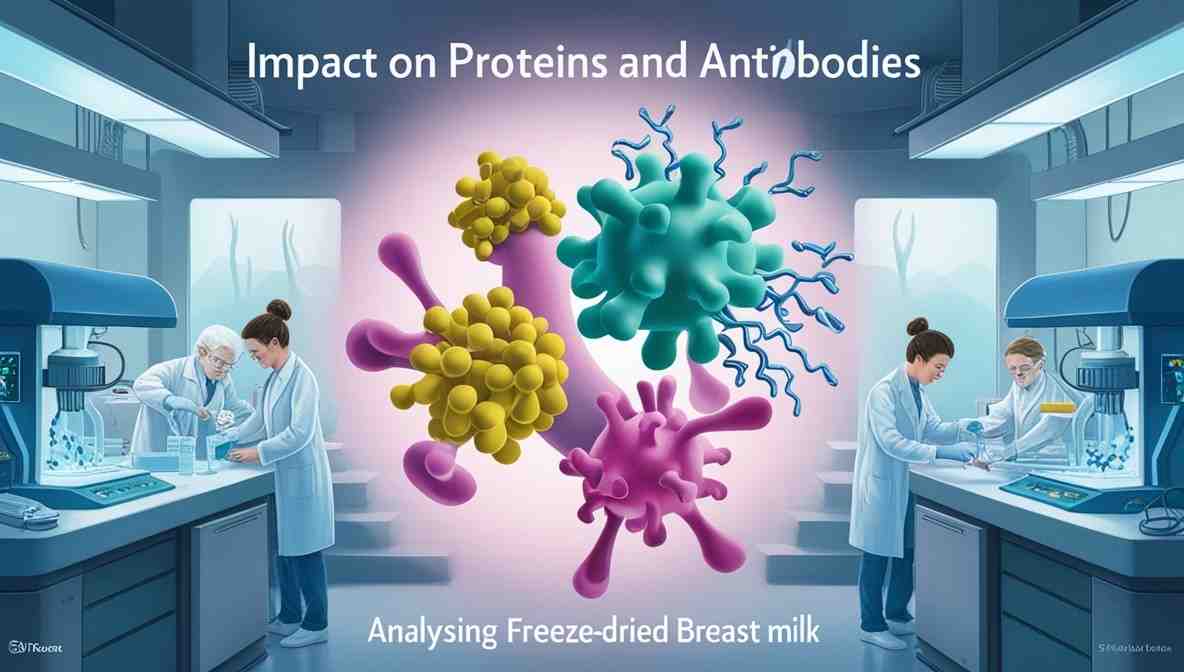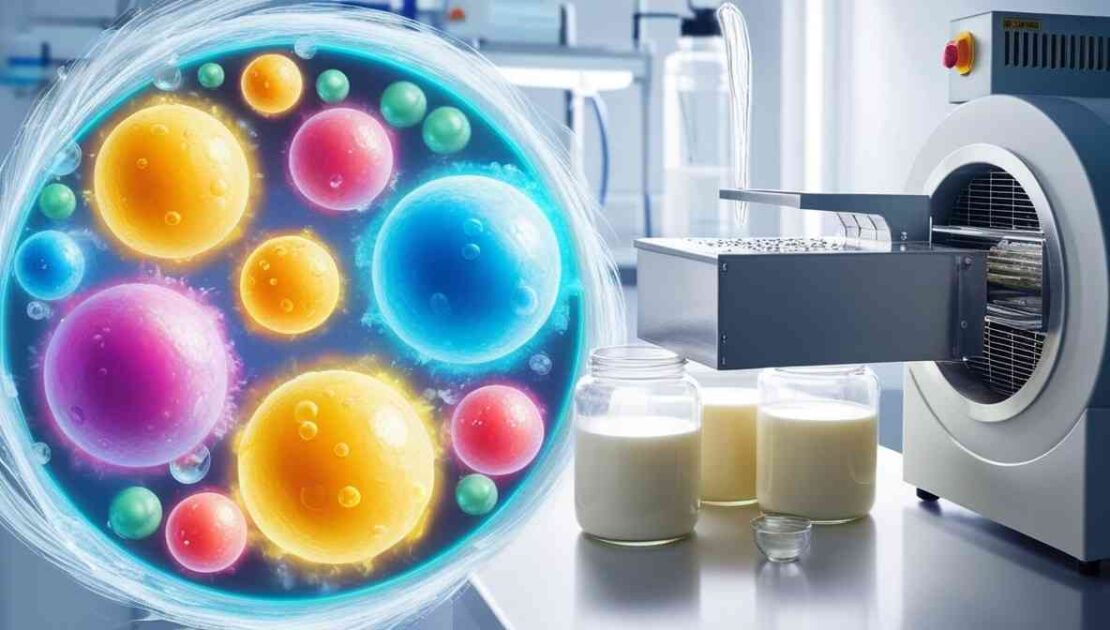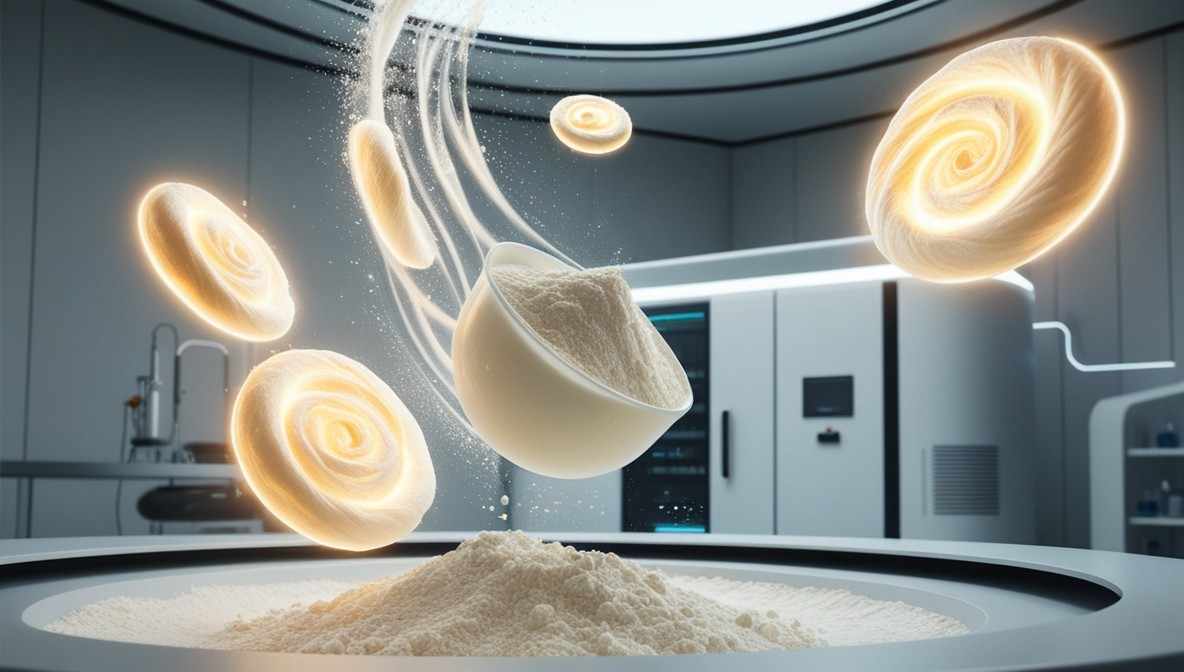Breast milk is often considered nature’s perfect food for infants, filled with essential nutrients that support growth and development. However, for mothers who need to store breast milk, the preservation process becomes crucial to ensure the milk retains its nutritional value.
Freeze-drying breast milk is one method gaining popularity, but many mothers wonder: Does freeze-drying breast milk cause it to lose nutrients? Let’s dive into this question to understand the impact of freeze-drying on breast milk nutrition.
Understanding Freeze-Drying
What is Freeze-Drying?
Freeze-drying, also known as lyophilization, is a dehydration process that removes moisture from a substance by freezing it and then reducing the surrounding pressure, allowing the frozen water to sublimate directly from ice to vapor. This technique is used in many industries, including pharmaceuticals and food preservation, as it maintains the integrity of the product.
For those interested in other food preservation methods, check out our detailed guide on how to freeze-dry eggs for long-term storage.
The Science Behind Freeze-Drying Breast Milk
Breast milk contains vital nutrients, including fats, proteins, and antibodies, that are crucial for a baby’s development. Freeze-drying breast milk involves removing water content, which prevents bacterial growth and extends shelf life. The key question is whether this process impacts the nutrients.
Does Freeze-Drying Preserve Nutrients?
Research shows that freeze-drying can effectively preserve most of the nutrients in breast milk. Unlike traditional freezing, which may cause some nutrient degradation over time, freeze-drying is gentler and maintains the milk’s nutritional composition more effectively. However, some sensitive components like antibodies and enzymes may lose partial activity during the process.
Impact on Proteins and Antibodies
Proteins, which play a critical role in a baby’s growth, are generally well-preserved during freeze-drying. However, some antibodies may lose potency due to the temperature changes involved. Still, the overall nutritional value remains high, and freeze-dried breast milk is considered superior to milk that has been frozen for long periods.

To learn more about the technicalities of freeze-drying equipment, explore our guide on compressor excess pressure causes and solutions.
Effects on Fats and Fat-Soluble Vitamins
Fats and fat-soluble vitamins (A, D, E, and K) in breast milk can sometimes be impacted by freeze-drying. Some studies suggest that the freeze-drying process may cause minimal oxidation of fats, but this does not significantly alter the overall quality of the milk. Additionally, most fat-soluble vitamins are retained.

Shelf Life of Freeze-Dried Breast Milk
One of the primary benefits of freeze-drying breast milk is the extended shelf life. Freeze-dried milk can last up to 6 months or more when stored in a vacuum-sealed container, making it ideal for mothers who want a long-term storage solution.
If you’re facing issues with shelf positioning in freeze-dryers, refer to our article on shelf position failures and solutions.
Comparing Freeze-Drying to Freezing Breast Milk
While freezing breast milk is a common preservation method, it may lead to nutrient degradation, especially in terms of antibodies and vitamins. Freeze-drying is a more advanced technique that minimizes this loss, making it a better choice for long-term storage.
Can You Freeze-Dry Breast Milk at Home?
While commercial freeze-drying is widely used, freeze-drying breast milk at home is challenging. It requires specialized equipment and expertise. There are, however, home freeze-dryers available, but it’s crucial to ensure that they are safe and effective for handling breast milk.
Learn more about troubleshooting common freeze-dryer issues, such as condenser cooling failures.
Safety Concerns with Freeze-Drying Breast Milk
Safety is a significant concern when it comes to freeze-drying breast milk, particularly in terms of contamination. Proper sterilization and handling are essential to ensure that the milk remains safe for infant consumption. Professional-grade equipment is recommended to ensure quality control.
The Importance of Proper Storage After Freeze-Drying
After freeze-drying, breast milk must be stored in airtight containers to prevent moisture from re-entering the product. This ensures that the milk stays preserved for extended periods without losing its nutritional value.
How to Rehydrate Freeze-Dried Breast Milk
Rehydrating freeze-dried breast milk is a straightforward process. Simply add water in the same volume as the amount removed during the freeze-drying process, and stir until the milk returns to its original consistency. It is essential to use sterile water to maintain the milk’s safety for babies.
Is freeze-dried breast milk as good as fresh milk?
While fresh breast milk is always best for a baby, freeze-dried breast milk is a close second when fresh milk isn’t available. The freeze-drying process maintains the nutritional value better than other preservation methods, making it a solid alternative for busy or traveling mothers.
Cost of Freeze-Drying Breast Milk
Freeze-drying breast milk can be more expensive than traditional freezing methods due to the specialized equipment required. However, the benefits of extended shelf life and nutrient preservation may justify the additional cost for some families.
Future Trends in Freeze-Drying Breast Milk
With advancements in freeze-drying technology, more efficient methods are being developed to further preserve the sensitive components of breast milk, such as antibodies. This will make freeze-drying an even more attractive option for mothers in the future.
If you’re interested in other applications of freeze-drying, check out our guide on detecting silicon oil in freeze-dryers.
Conclusion: Is Freeze-Drying Breast Milk Worth It?
Freeze-drying breast milk is a highly effective way to preserve its nutrients and extend its shelf life. While some sensitive components may lose partial activity, the overall nutritional value remains intact, making it a viable option for long-term storage.
How Freeze-Drying Works for Breast Milk
In the case of breast milk, freeze-drying involves freezing the milk first and then subjecting it to a vacuum environment where the water is removed through sublimation (the transition of water from solid ice directly to vapor). This method ensures the milk stays in a stable, dry state.
Breast Milk Composition
Breast milk contains a wide range of vital nutrients, including proteins, fats, vitamins, minerals, and antibodies. These elements are crucial for an infant’s immune system, cognitive development, and overall health. Any preservation method, including freeze-drying, must aim to protect these nutrients.
The Process of Freeze-Drying Breast Milk
Steps Involved in Freeze-Drying
- Freezing: The milk is frozen at extremely low temperatures.
- Primary Drying: In a vacuum chamber, the frozen milk undergoes sublimation, removing most of the water content.
- Secondary Drying: The remaining moisture is removed, leaving behind dry milk powder that can be stored for long periods.
Impact on Composition
During freeze-drying, the structural integrity of the milk is maintained, and the delicate proteins and enzymes are protected from heat damage. However, some nutrients may still be lost during the process.
Does Freeze-Drying Affect Nutrient Content?
Possible Nutrient Loss
Although freeze-drying is effective at preserving the overall structure of breast milk, there may be some loss of heat-sensitive vitamins, such as Vitamin C. However, most essential nutrients, including proteins, fats, and antibodies, are well-preserved.
Factors Influencing Nutrient Preservation
- Storage Conditions: Proper storage of freeze-dried milk in an airtight container can prevent further nutrient degradation.
- Temperature: If the temperature rises during storage or processing, nutrient loss may increase.
Comparison: Freeze-Drying vs Other Preservation Methods
Freeze-Drying vs Refrigeration
Refrigeration only lasts a few days and risks bacterial growth. Freeze-drying offers a much longer shelf life without the need for constant cold storage.
Freeze-Drying vs Freezing
Freezing is effective but can damage the milk’s cellular structure over time, leading to nutrient loss when thawed. Freeze-drying is gentler and retains more of the milk’s original composition.
Freeze-Drying vs Pasteurization
Pasteurization involves heating the milk to kill bacteria, but it can destroy heat-sensitive nutrients. Freeze-drying preserves more nutritional integrity by avoiding heat.
Benefits of Freeze-Drying Breast Milk
Convenience for Mothers
Freeze-dried breast milk is lightweight, easy to store, and can be rehydrated with water, making it ideal for travel or emergency situations.
Extended Shelf Life
Freeze-dried milk can last for months or even years when stored properly, providing a long-term solution for mothers who pump extra milk.
Nutrient Retention
The process helps retain the milk’s proteins, antibodies, and fats, making it a viable alternative for mothers who want to ensure their milk’s quality over time.
Potential Drawbacks of Freeze-Drying Breast Milk
Cost and Accessibility
Freeze-drying equipment can be expensive and not easily accessible for home use. Most mothers would need to use commercial services for freeze-drying their milk.
Risk of Nutrient Loss
Although most nutrients are preserved, some sensitive vitamins might be diminished, potentially impacting the full nutritional profile.
Scientific Studies on Freeze-Drying and Nutrient Loss
Research suggests that freeze-drying breast milk retains the majority of its nutritional content. For example, antibodies such as immunoglobulins and proteins are well-preserved, with minimal loss reported in scientific studies.
Nutrient Breakdown: What Changes in Freeze-Dried Breast Milk?
Proteins
Freeze-drying helps preserve the proteins in breast milk, which are vital for infant growth and immune support.
Fats
The fat content remains stable, ensuring that the baby still receives the essential fatty acids necessary for brain development.
Vitamins and Minerals
Most vitamins and minerals remain intact, although heat-sensitive ones like Vitamin C may reduce slightly.
Antibodies
The immune-boosting properties of breast milk, particularly antibodies, are largely preserved in the freeze-drying process.
Maintaining Quality During Freeze-Drying
To ensure the best quality, freeze-dried breast milk should be stored in airtight containers away from light and moisture.
Who Should Consider Freeze-Drying Breast Milk?
Freeze-drying is ideal for mothers who want to preserve large amounts of breast milk for long-term storage or those who may face unpredictable circumstances that prevent regular pumping.
Rehydrating Freeze-Dried Breast Milk
How to Rehydrate
Rehydrating freeze-dried breast milk is simple—just add water. The milk quickly absorbs the water, returning to its original form.
Common Myths About Freeze-Drying Breast Milk
Contrary to popular belief, freeze-drying does not drastically reduce the milk’s nutritional value. Scientific evidence shows it to be an effective preservation method.
Conclusion
Freeze-drying breast milk is a convenient and effective way to preserve nutrients over extended periods. While some minor nutrient loss may occur, the benefits of freeze-drying outweigh its drawbacks, making it an excellent option for mothers looking to store their milk long-term.
FAQs
How long does freeze-dried breast milk last?
When stored properly, freeze-dried breast milk can last several years without significant nutrient loss.
Is freeze-dried breast milk safe for babies?
Yes, freeze-dried breast milk retains its nutritional value and is safe for infants. Yes, freeze-drying breast milk is safe when done in a facility that adheres to strict food safety standards. This method effectively preserves the nutritional content of the milk and is a convenient solution for parents who are frequently traveling or live in regions vulnerable to natural disasters.

